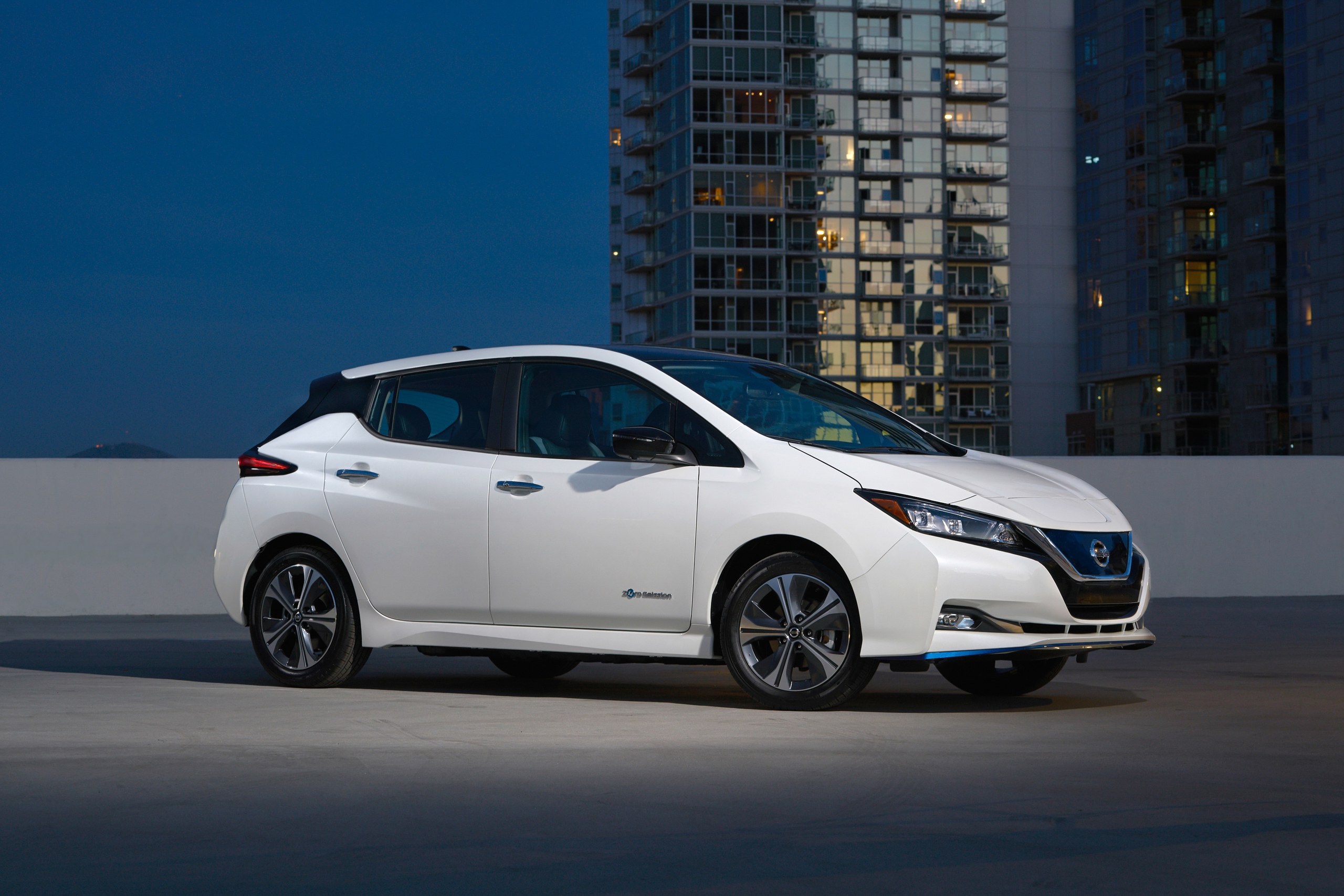Read The Full Article On: Gearpatrol
Tesla may get the credit for kicking off the modern era of capable electric cars, but Nissan was the company that really started the ball rolling. Two years before the Model S hit the streets, the company rolled out the first Leaf. Unlike most other electric cars at the time, which were basically gas-powered cars retrofitted with batteries and motors, it was designed from scratch to be an EV. Its compact hatchback body made it great for city driving, as did the 207 pound-feet of torque available the instant you brushed the accelerator.
Still, there was one big issue: it only went 73 miles on a charge, according to the EPA. Given the vagaries of speed and weather on EV range, that was realistically just enough to knock out the average American’s commute of about 40 miles and little else. It made the Leaf a great second car for many people…and a great primary vehicle for almost no one.

Nissan, to its credit, didn’t neglect the Leaf. Minor hardware updates raised the range to 84 miles by 2013; then, that first 24-kWh lithium-ion battery was replaced by a 30-kWh one for 2015 that bumped range to 107 miles. When the second-generation model appeared in 2018, it came packing 40 kWh of battery packs, enough for a 151-mile range. Then, late last year, Nissan added a second version with a 62-kWh battery that, even though it’s connected to a more powerful electric motor, delivers an EPA-rated 226 miles of range. Here in the United States, it goes by the name of Leaf Plus, and it’s the version we spent a week driving around in.LEARN MORE: HERE
Say so long to range anxiety
Depending on which trim you choose, the Plus costs between $5,560 and $6,600 more than the regular Leaf — in other words, roughly $75 extra dollars per added mile of range. It’s money well spent. Again, electric car range can vary significantly based on how fast you drive and how much you run the heater or air conditioner. Doing average highway speed of 75 mph on a hot summer or cold winter day could easily knock 20 percent or more off the claimed range; add in the fact that few of us really want to gamble on using the last 10-15 miles of any vehicle’s fuel supply, and the usable range of the regular Leaf can easily fall to barely more than 100 miles. The Plus, on the other hand, can knock out 180 miles or more even under that scenario.
Or, to put it another way — the Plus has the range to connect metro areas in a way the regular Leaf struggles to do. New York City to Boston? 215 miles. NYC to D.C.? 227. Atlanta to Nashville? 248. Miami to Orlando? 236. Dallas to Houston? 239. Portland to Seattle? 175. Detroit to Chicago? 283. The Leaf Plus can knock out any of those either in a non-stop shot or, at worst, with a short sip from a fast charger. (Plus, every Leaf Plus can charge at up to 100 kW, while the regular Leaf can only do as good as 50 kW.)
The Leaf Plus offers one of the more entertaining EV driving experiences
No, it can’t blitz from 0 to 60 in less than three seconds like the most powerful Porsche Taycans and Tesla Model Ss, but the Leaf Plus still is a hoot to drive around town. The larger motor certainly helps; its 214 hp and 250 lb-ft give it a forceful oomph when you flex your foot into the go pedal, enabling you to beat unsuspecting Hemis and smallblocks out of the blocks in the stoplight grands prix or cut through traffic with verve.
But just as enjoyable is the potent regenerative braking on offer via the E-Pedal. Flick the switch near the shifter, and the car switches to one-pedal driving, enabling up to 0.2 g of deceleration just by lifting off the accelerator. In effect, this means you’ll only ever need to stomp on the left pedal if you need to stop fast; normal deceleration can be controlled just by playing with the accelerator. In addition to helping save electrons, it brings a new element of entertainment to the drive. Can I keep this sucker steady without hitting the brakes?

You’re better off avoiding the most expensive version
The Leaf Plus I tested was the SL, the top-shelf model that comes packing leather upholstery, a seven-speaker Bose stereo, 360-degree parking cameras and Nissan’s ProPilot Assist suite of ADAS tech that lets the car all but drive itself on the highway. But that carries with it a price tag of $43,900, approaching entry-level luxury car territory — and neither the leather nor the stereo feels like what you’d expect of a mainstream brand for that money. Plus, as with other similar systems like Tesla Autopilot, Mercedes-Benz Drive Pilot and BMW’s combo of semi-autonomous features, the Leaf’s semi-self-driving powers are technically competent — but seem rather pointless in the real world; a car that can steer itself but requires you to keep your hands on the wheel and your eyes on the road anyway offers basically zero added convenience over an active cruise control system and lane departure warning.
The Leaf SV Plus, however, strikes a far better balance. It still offers Apple CarPlay and Android Auto, satellite radio and a leather-wrapped steering wheel, while the $900 All-Weather Package brings the SV’s much-valued heat pump cabin heater, along with heated seats, mirrors and steering wheel. So equipped, it’ll run you a hair over $40,000 — and that’s before federal and state tax credits kick in. The former alone knocks $7,500 off your bill come tax season, while the latter can lop as much as another $5,000 off the price. In other words, if you live in New Jersey, you could drive off with one of the best EVs this side of a Tesla for right around $30,000.

